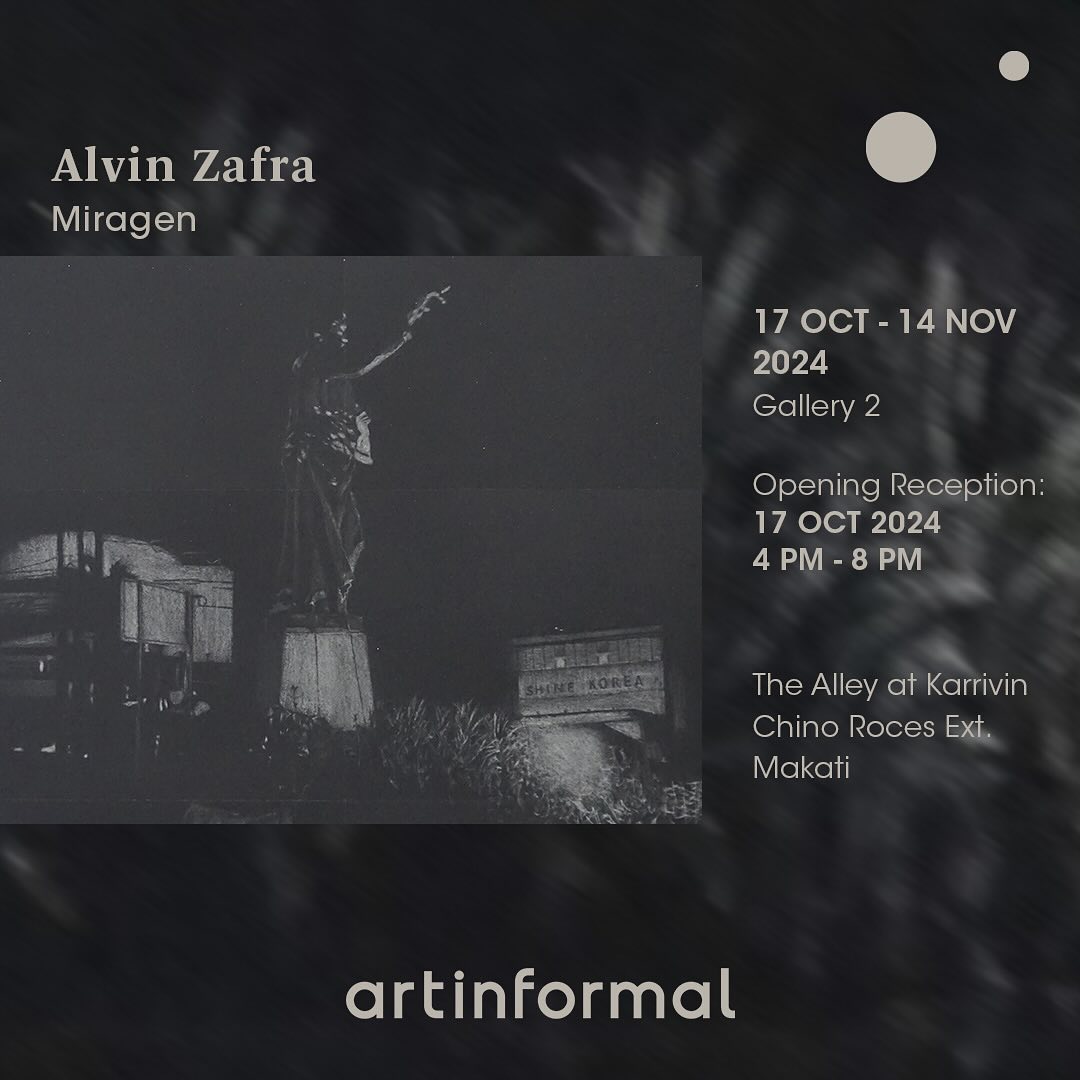October 17 – November 14, 2024
Artinformal
Makati, Metro Manila
In the depth of encompassing darkness, light persists in varying degrees. At times, it bounces faintly on surfaces; once in a while, it pierces brightly as a source. What can be seen is not only at the whim of what was made visible by light, but also by the vision of the artist. Like a fly with a compound eye, his vision takes in several inputs: his eyesight impaired since teenhood, now alleviated by his doble vista glasses, then also aided by his camera in this process. The resulting image: a synthesis of these optical structures. A byproduct of which are illusions and apparitions, dancing in the dark.
There are several layers of transference that reveal these mirages. What the artist considers his “other eye” – the camera – takes a specific three-dimensional view and flattens it to two, imprinting and making a grid of color pixels in the x- and y-axis. From this inadvertent removal of a dimension, a void arises. After which, the artist postprocesses by adjusting image properties such as brightness and contrast, further highlighting and hiding details. It is not only digital manipulation that happens, but also physical, as he then renders the reference image using white pebbles on sandpaper panels. As he etches, he fills in the gaps. In this act of retracing and remembering, something else manifests.
And so there is uncanniness in looking at these seemingly familiar urban landscapes. Is someone peeking in the dim areas of “Omniscient”? Is that a shadow of a tree, or a man walking in “Daydreamer”? Are those cars in motion in “Cross Fade”, or is it actually an empty highway? In “Reflecting Pool”, is it a view to the next building, or a bookshelf? The answer to these can also be “no”, the images defying our mind’s tendency to look for patterns, as we also similarly fill the gaps.
Setting the stage for these illusions – laying the sandpaper panels side-by-side so there will be no noticeable gaps – is what the artist Alvin Zafra considers as one of the most challenging parts of the process. Beyond using an “object/medium” (a part of his practice that has been widely written about), the labor that goes behind preparing the sandpaper as his canvas is usually overlooked. At the base is plywood that is cut to his desired size and sanded enough to set up a uniform surface. There, sandpaper is used for its original purpose. Then, he carefully cuts, tiles, and sticks unused sandpaper on the sanded surface, now primed for his artistic purpose.
Harking back to his work bearing the same title featured in Art Basel Hong Kong 2016, the core of Miragen still rings true today. Zafra’s images of the city are still “snapshots for a modern-day flaneur,” as described by Cocoy Lumbao in his write-up for the art fair. The once morning scenes became evening vignettes in 2021, when the artist nightcrawled past curfew hours during the lockdown. Until then, he continues capturing the encroaching darkness, the grappling light, the seeming phantasm.
More info: Artinformal website · Artinformal Facebook · Artinformal Instagram
